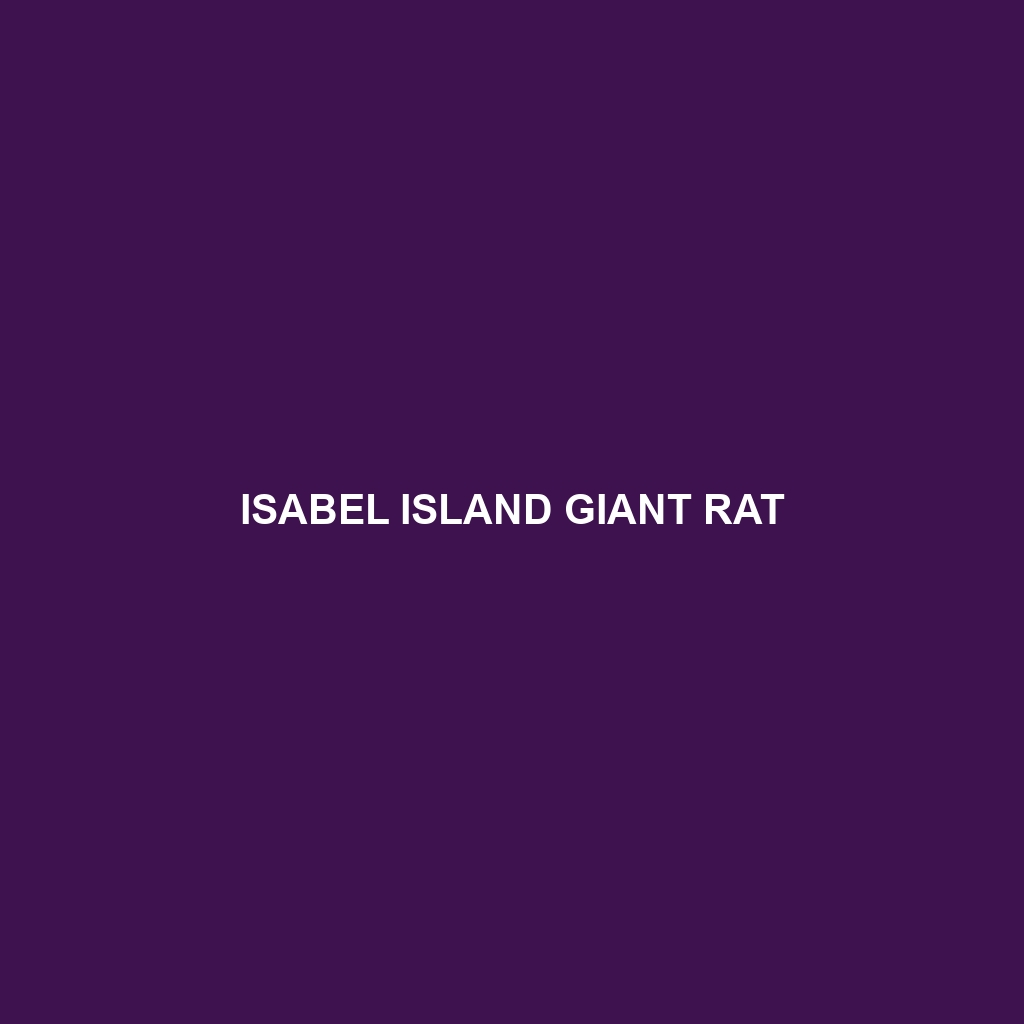Isabel Island Giant Rat (Scientific Name: )
Habitat: The Isabel Island Giant Rat primarily inhabits the lush forests of Isabel Island, located in the Solomon Islands. These rodents favor dense, moist environments rich in vegetation, which provide ample cover and food resources. The island’s subtropical climate creates an ideal habitat for their survival, characterized by a mixture of tropical rainforests and mountainous terrains.
Physical Characteristics: The Isabel Island Giant Rat is notably large compared to other rodent species, with individuals averaging between 30 to 50 cm in length. Their fur is generally brownish-gray, offering excellent camouflage within their natural habitat. The body is robust and elongated, featuring long whiskers and a distinctive long tail that aids in balance. This species can be easily identified by its sizeable, rounded ears and sharp incisors, which are vital tools for foraging.
Behavior: Isabel Island Giant Rats are primarily nocturnal, exhibiting increased activity during the night. They are known to be social animals, often found in small groups, which helps in foraging and protecting against predators. Their curious nature leads them to explore their environment thoroughly, which enhances their adaptability. Additionally, they communicate through various vocalizations, contributing to their social structure.
Diet: The diet of the Isabel Island Giant Rat consists mainly of fruits, seeds, and roots. They exhibit opportunistic foraging behaviors, often feeding on a variety of plant matter available in their habitat. Their omnivorous diet allows them to thrive in the diverse ecosystem of Isabel Island, making them an integral part of the food web.
Reproduction: The reproductive habits of Isabel Island Giant Rats typically involve a breeding season that peaks during the warmer months. Females breed multiple times a year, usually producing litters of two to four offspring. The young are born altricial, meaning they are underdeveloped and require extensive care. Parental care is vital for the survival of the young, with both parents often involved in nurturing their offspring until they are independent.
Conservation Status: Currently, the Isabel Island Giant Rat is classified as vulnerable due to habitat destruction and environmental changes affecting their natural habitat. Conservation efforts are critical to preserving this unique species and its ecosystem, emphasizing the need for habitat protection and restoration initiatives.
Interesting Facts: One fascinating aspect of the Isabel Island Giant Rat is its role in seed dispersal within its habitat. By consuming various fruits and seeds, they contribute to the growth of new plants, promoting biodiversity on Isabel Island. Additionally, they are among the largest rats found in any island ecosystem.
Role in Ecosystem: The Isabel Island Giant Rat plays a crucial role in its ecosystem as both a seed disperser and prey for larger predators. Their foraging habits help maintain plant diversity, while their interactions with other wildlife contribute to the balance of the forest ecosystem. Understanding the ecological significance of this species underscores the importance of its conservation.
